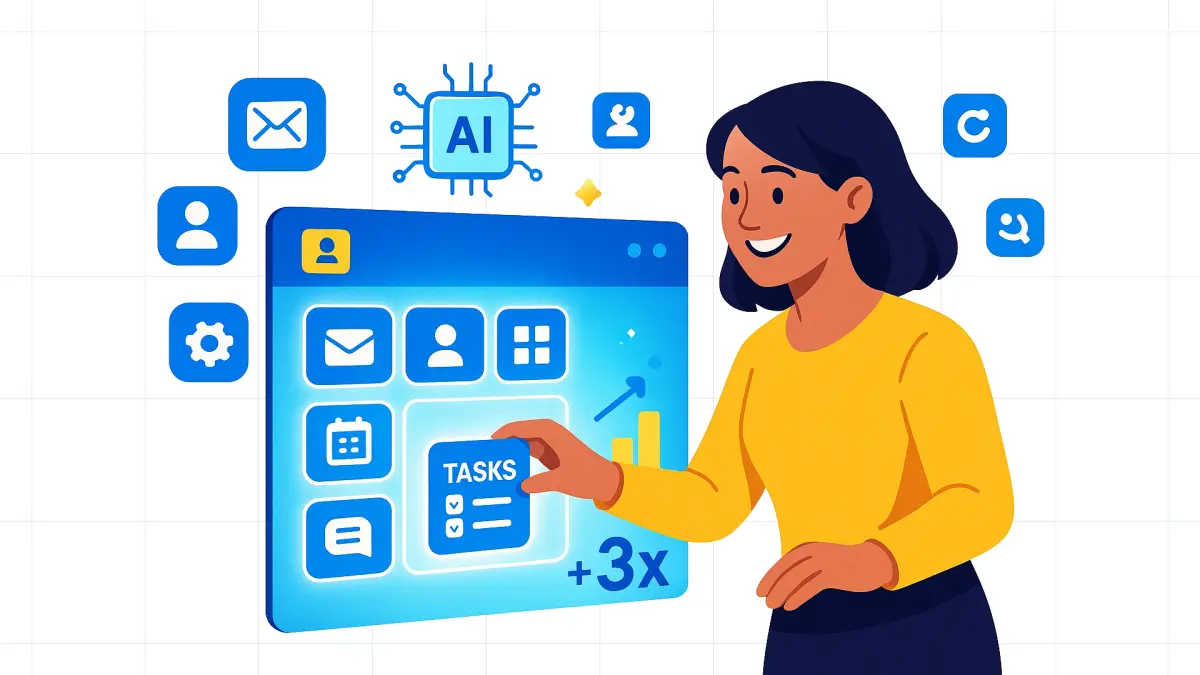How Vibe Coding “Micro-Apps” Are Redefining HR Software
First it was no-code. Now it’s vibe coding: describe the HR tool you want and ship it tonight. The teams who learn this first win.

A recent interaction with an HR leader highlighted a growing trend in the evolution of HR software.
Dissatisfied with rigid platforms that couldn’t address the specific needs of her department, she turned to a new generation of AI-powered, no-code tools.
In just a few weeks, she independently built a custom HR app tailored precisely to her team’s processes and requirements.
Such stories are becoming the norm as HR professionals, often without technical backgrounds, embrace intuitive platforms to create micro-apps and AI agents that solve their unique challenges.
This marks a shift in HR software: robust core systems are now complemented by flexible, user-built tools, seamlessly integrated and enhanced by AI.
As HR teams are empowered to address their day-to-day pain points directly, efficiency and innovation flourish. This is the promise - and the future - of vibe coding in HR.
AI in HR Today
with Anthony Onesto
Subscribe for exclusive insights from Anthony Onesto, Chief People Officer at Suzy, and learn how AI is reshaping HR, enhancing employee engagement, and driving business success.
TOGETHER WITH
Vibe Coding: The New Paradigm
Vibe coding marks a profound shift in how HR applications are conceived and built.
Unlike traditional low-code/no-code (LCNC) platforms, which require users to assemble workflows visually, vibe coding allows HR professionals to describe what they want in plain English, and have AI generate fully functional HR solutions.
The result: HR teams can focus on employee experience and business outcomes, while AI handles technical implementation.
This evolution democratizes HR solution creation.
Now, HR problem-solvers and people-focused innovators, not just IT, can rapidly build micro-apps tailored to their teams’ needs.
Platforms like Lovable are leading this charge, empowering HR professionals to generate deployable web apps from natural language prompts, drastically shrinking the time from idea to execution.
Hyper-Specific Solutions at Scale
The real impact of vibe coding is felt in the “last mile” of HR technology, those unique, granular people processes that off-the-shelf HR software can’t address.
When HR leaders create their own custom micro-apps, they close efficiency and compliance gaps that would otherwise persist for months.
Case studies across industries highlight the value of empowering HR domain experts to streamline onboarding, benefits management, and compliance workflows, boosting productivity and employee satisfaction.
The Composable Enterprise: Modular, Agile, and Scalable
This wave of user-built HR solutions demands a new architectural approach.
Enter the composable HR technology environment, a model where modular, reusable components (APIs, microservices, events), enterprise solutions and autonomous agents, form the backbone of HR technology.
Here, people technologists can rapidly assemble and test new capabilities without disrupting core HR systems.
This managed modularity fosters a culture of experimentation and enables HR to adapt swiftly to changing organizational needs.
AI agents add another dimension: autonomous, task-specific programs that automate complex, repeatable HR processes, such as scheduling interviews, answering benefits questions, or monitoring compliance.
Gartner predicts 40% of enterprise apps will feature such agents by 2026.
These platforms let non-developers build apps and embed AI-powered interfaces with ease, making the agentic layer a key pillar of future HR software.
The main challenge is building an environment where the enterprise solutions, what I call “micro-apps” and the autonomous agents are all talking to each other effectively.
Aligning IT and Business for Innovation
The benefits of vibe coding in HR go beyond cost savings.
By lowering barriers to creating HR solutions, organizations become more agile and people-centric.
Internal HR tools that once took months to develop can now be built in weeks, freeing IT professionals to focus on infrastructure and security.
Meanwhile, HR teams are empowered to build exactly what they need, fostering a culture of accountability, upskilling, and workforce engagement.
The Need for Robust Governance
With great power comes great responsibility - so says Uncle Ben of the Spiderman series.
The democratization of HR app development can lead to “Shadow IT”, unsanctioned tools, fragmented employee data, and new security vulnerabilities.
AI-generated code may contain serious security flaws or be susceptible to prompt-injection attacks.
Without oversight, organizations risk non-compliance, data breaches, and operational chaos in their most sensitive people systems.
IT’s Role: Orchestrator and Guardian
To safely harness the promise of vibe coding in HR, IT must transform from the sole builder to the strategic orchestrator of the HR application landscape.
Establishing a group to review requirements is kay, as it sets protocols, governance frameworks, and technical guardrails to protect sensitive employee information.
Organizations will need to build cross-functional groups combining IT and HR expertise, to ensure solutions are scalable, secure, and compliant.
Technical and policy guardrails, from secure APIs to strong input validation and HR compliance checks, are non-negotiable.
The Road Ahead
The future belongs to HR organizations that blend robust, governed core enterprise systems with the agility of user-built micro-apps and AI agents.
HR leadership must treat vibe coding not as a passing trend, but as a strategic imperative for people operations.
Executives should invest in composable HR architectures, empower citizen HR developers, and prioritize governance as critical people infrastructure.
In this composable future, innovation is democratized, IT is a partner and protector, and business resilience is built on the seamless integration of human creativity and AI-driven automation.
AI in HR Today
with Anthony Onesto
Subscribe for exclusive insights from Anthony Onesto, Chief People Officer at Suzy, and learn how AI is reshaping HR, enhancing employee engagement, and driving business success.
